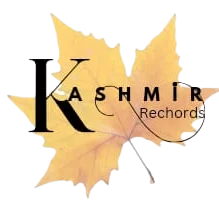Shankha Lipi, also known as “Conch Script” or “Shell Script”, is a term used by scholars to describe ornate spiral characters that are thought to be Brahmi derivatives. The characters resemble conch shells or Shankhas and are found in inscriptions across north-central India dating back to between the 4th and 8th centuries. Interestingly, Shankha Lipi inscriptions have also been found from Akhnoor and Bhaderwah area of Jammu and Kashmir, establishing that in past also, both these towns were active pilgrimage centres.

These ciphered ornate spiral characters assumed to be Brahmi derivative, have tentatively been assigned a new script family. Apart from Akhnoor and Bhaderwah, Shankha Lipi inscriptions have also been found from Bihar, Maharashtra and Karnataka. Prominent sites with shell inscriptions include the Mundeshwari Temple in Bihar, the Udayagiri Caves in central India and Mansar in Maharashtra. Shell inscriptions have also been found in Junagarh, Gujarat, and in Java and Borneo, Indonesia.
Indian Council of Historical Research (ICHR) that is presently promoting and working on a project “Jammu, Kashmir and Ladakh Through the Ages’’ under the initiative of the Ministry of Education, is bringing to the fact the age-old cultural ties of Jammu and Kashmir with the rest of India. Highlighting findings of Brahmi, Shankha Lipi and other scripts from Jammu and Kashmir, is a part of this great initiative.

Script of Devotion
Historians believe that shell (Shankha) inscriptions were engraved on temple pillars, freestanding columns and rock surfaces, the latter generally at sites with prominent cave shrines. The shell script was never used for long records or discursive texts but mostly for denoting names or auspicious symbols or a combination of both. Shell letters have normally been found of the same size or slightly bigger than Brahmi letters, but in some cases they are gigantic, several metres high, as at the Udayagiri Caves.
The archaeological evidences unearthed at Manda, Akhnoor in 1960s point out that Jammu must have had exposure to the earliest system of writing in the sub-continent. The use Shankha Lipi, found on small round stones at Akhnoor, are now lying in the collection of Dogra Art Museum, Jammu. Shell inscriptions have also been found on stone boulders near Bhadarwah.
According to Dr Lalit Gupta, a noted Scholar and Art critic, “since Shankha Lipi, has been used for names and signatures by the pilgrims as record of their visits to famous pilgrimage centers, this affirms the belief that Ambaran (Akhnoor) and Bhadarwah were active centers of pilgrimage in Jammu between 4th to 7th century CE’’.
Study on Shankha Lipi
The first detailed study of shell inscriptions was undertaken by noted academic Richard Salomon. The script is assumed to be a Brahmi derivative, but Salomon observed that shell script has diverged so far from the normal pattern as to be effectively a new script family. Salomon determined that there are a sufficient number of shell characters to represent the syllables of the Sanskrit language, and tentatively assigned sounds to some of characters. Prof B. N. Mukherjee subsequently proposed a system of decipherment based on a few key inscriptions using the assumptions that the script is an ornamental form of the contemporary Brahmi script through the centuries. Most of the Shankha Lipi inscriptions are from the Gupta period and are names of individuals, akin to ornamental signatures, although some predate the Gupta period.
Jammu’s Brahmi Inscriptions
According to Dr Lalit Gupta, post-Mauryan Brahmi inscription was first noticed in 1921 by R.C.Kak, the then Prime Minister of the Princely State of Jammu and Kashmir and an archaeologist of repute. Dated between 3rd to 5th centuries CE by R.C. Kak, the Bathastal inscription is one of the oldest Brahami inscriptions in Jammu region.

Dr Gupta, in one of his write-ups, quotes epigraphist B.K.Kaul Dembi having placed and compared Bathastal cave inscription with coins of Indo-Bactrian kings Agathocles and Pantaleon, Rock inscription of Khanihara, near Dharamshala in Himachal Pradesh and Inscription of Kshatrapa King Sodasa, all belonging to Post-Mauryan Group of 184 BCE to the beginning of Christian era.
Second important inscription in Jammu region is the Bhadarwah Cave Inscription, inscribed inside a cave shrine (called as Gupt Ganga) on the bank of river Neru near Bhadarwah town. According to Dembi, it is perhaps the longest Brahmi inscription in the region and the second oldest Brahmi inscription from the Himalayan Valleys of Chenab region. Brahmi inscription has also been found inscribed on an iron trident at Sudhamahadev Shiva temple.

